Scope parallax is an important concept to understand in optics, particularly for those using scopes for shooting or observing targets.
Parallax refers to the apparent shift in the position of an object when viewed from different angles. In the context of optics, parallax can affect the accuracy and clarity of the target being viewed through a scope.
Scope parallax specifically refers to the phenomenon where the reticle or crosshair in a scope appears to move in relation to the target, causing the target to appear out of focus or misaligned. This can impact the shooter’s ability to accurately aim at the target.
To identify scope parallax, factors such as the target distance and the magnification setting of the scope need to be considered. Adjusting the parallax knob or using parallax correction devices can help correct the issue and bring the target and the reticle into proper alignment.
To ensure optimal use of scopes with parallax, it is important to follow some tips and best practices. These may include adjusting the parallax correctly for the target distance, using the appropriate magnification setting, and practicing proper shooting techniques.
By understanding the concept of scope parallax and its impact on accuracy, users can make necessary adjustments and improvements to their shooting or observing experience with scopes.
Understanding Parallax in Optics
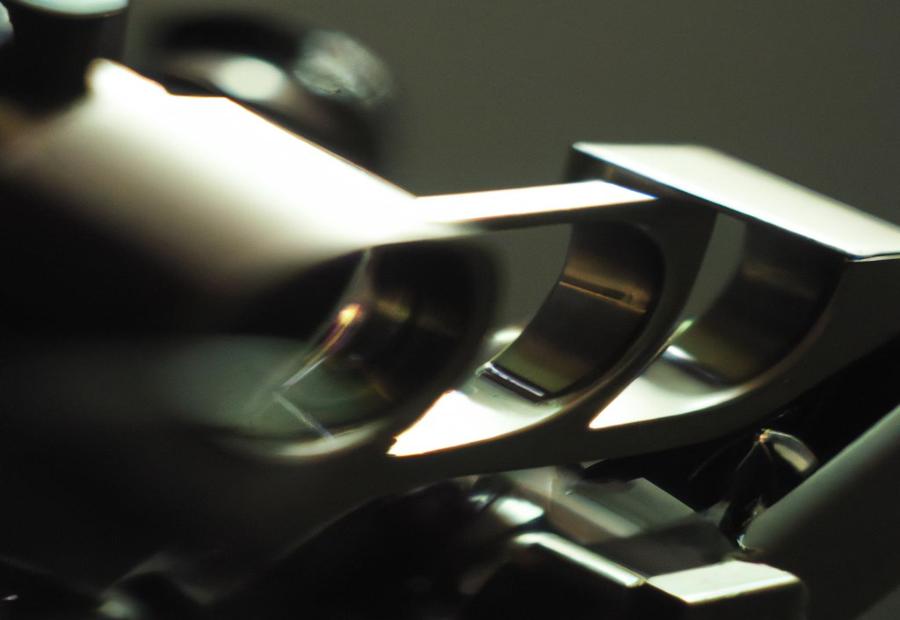
Photo Credits: Paintballbuzz.Com by Carl Clark
Parallax in optics refers to the apparent shift in the position of an object when viewed from different angles.
Understanding parallax is crucial in optics, especially in devices like telescopes and microscopes, as it helps determine the accuracy of measurements.
By comprehending parallax, scientists and researchers can make precise calculations and observations, leading to more accurate data and results.
It is essential to consider parallax when designing optical instruments to ensure that the measurements taken are free from errors caused by the phenomenon.
By understanding parallax in optics, one can analyze and interpret optical phenomena and make informed decisions based on the observations.
What is Parallax?
Parallax refers to the apparent shift in the position of an object when viewed from different angles. In optics, it is the difference in the apparent positions of objects seen through a sight, such as a scope.
This phenomenon occurs because the sight and the target are not in perfect alignment, causing the reticle or crosshair to appear to move relative to the target when the shooter’s head or eye position changes.
Understanding parallax is crucial in optics, particularly when using scopes for precise aiming. The presence of parallax can lead to inaccurate shots, especially at longer ranges. To identify parallax, factors such as distance, target magnification, and eye position must be considered.
Fortunately, most high-quality scopes have parallax adjustments that allow shooters to correct this error.
To correct parallax, shooters can adjust the parallax knob or use parallax correction devices, such as adjustable objective lenses or side-focus mechanisms. By eliminating or minimizing parallax, shooters can achieve better accuracy and consistency in their shots.
It is important to note that parallax is a common misconception in shooting. Some people believe that parallax only affects long-range shooting or that all scopes have parallax adjustment capabilities, but these notions are incorrect.
When using scopes with parallax, it is recommended to properly set up the scope, ensure proper focusing and diopter adjustment, and maintain a consistent eye relief distance for optimal performance.
Types of Parallax
- Visual Parallax: Visual parallax is the apparent shift in the position of an object when viewed from different angles. It occurs due to the distance between the observer and the object, causing the object to appear to move relative to the background.
- Geometric Parallax: Geometric parallax refers to the method used to measure the distance to nearby stars. By observing the apparent shift of the star’s position when viewed from different points in Earth’s orbit, astronomers can calculate the star’s distance.
- Stellar Parallax: Stellar parallax is a specific type of geometric parallax used to determine the distance to stars. It relies on the measurement of the apparent shift of a star against the background of distant stars when observed from opposite sides of Earth’s orbit.
- Stereoscopic Parallax: Stereoscopic parallax is the phenomenon that allows humans to perceive depth in 3D images or movies. It occurs when each eye receives a slightly different view of the same object, creating a sense of depth perception.
- Motion Parallax: Motion parallax is the perceived difference in the motion of objects at varying distances. When an observer moves, objects closer to them appear to move faster than objects farther away.
What is Scope Parallax?
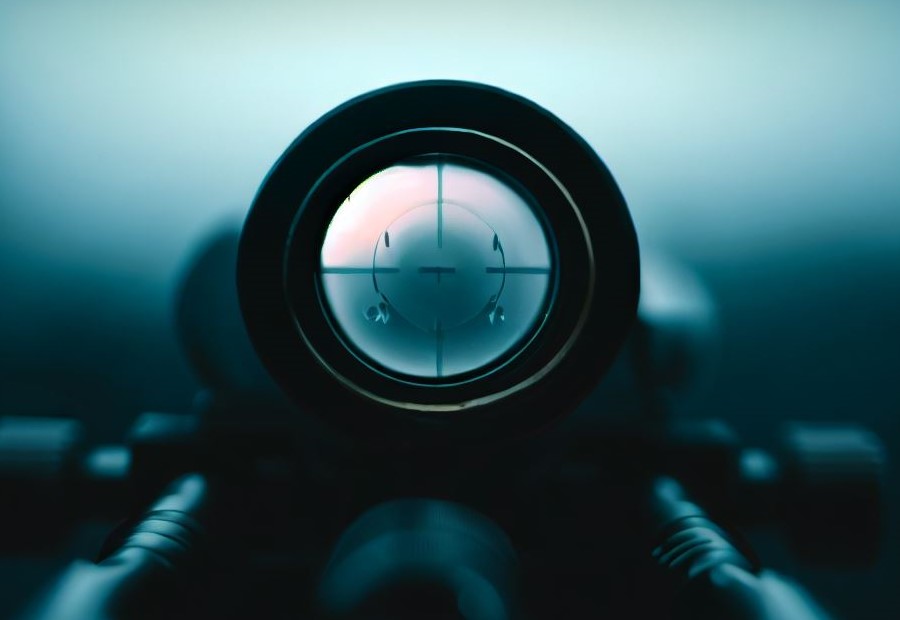
Scope parallax, also known as telescope parallax, refers to the phenomenon whereby the apparent position of an object viewed through a telescope undergoes a shift when the observer changes their viewing position.
This shift occurs due to the difference in perspective between the observer and the telescope. Understanding the concept of scope parallax is crucial when utilizing a telescope for precise observations.
By accounting for the parallax effect, astronomers can make corrections for the apparent shift and ascertain the true position of celestial objects. Scope parallax plays a significant role in astronomical measurements and must be taken into consideration to ensure accurate calculations and observations.
A comprehensive understanding of how scope parallax impacts observations can lead to the acquisition of more precise data and further enhance our comprehension of the vast universe.
Definition of Scope Parallax
Scope parallax is a phenomenon that occurs in optics and can affect the accuracy of your shooting.
It refers to the apparent shift in the position of the target when viewed through a magnifying scope. The definition of scope parallax is when the reticle and the target do not align properly due to the angle between the scope’s line of sight and the target.
Scope parallax occurs because the reticle is focused at a specific distance, while the target may be at a different distance. This causes the reticle to appear to move in relation to the target when the shooter moves their head or the position of the scope changes. This can lead to aiming errors, especially at longer distances.
Understanding scope parallax is important in optics because it allows shooters to make the necessary adjustments to ensure accurate aim.
By recognizing the presence of scope parallax and knowing how to correct it, shooters can enhance their shooting proficiency and increase their chances of hitting the target precisely.
To identify scope parallax, factors such as distance, magnification, and the reticle design should be taken into consideration. Methods such as adjusting the parallax knob or using parallax correction devices can be employed to correct scope parallax.
It’s important to note that not all scopes have the ability to adjust for parallax, so it’s crucial to choose a scope that meets your shooting needs.
By understanding the definition of scope parallax and employing the proper techniques to correct it, shooters can improve their accuracy and overall shooting experience.
How Does Scope Parallax Occur?
Scope parallax occurs when the reticle of a scope appears to move relative to the target when the shooter’s eye position changes. This phenomenon is caused by the misalignment between the reticle and the image plane of the target.
The occurrence of scope parallax is dependent on the design and construction of the scope. When the reticle and the image plane are not perfectly aligned, parallax becomes more pronounced at longer distances.
The misalignment can happen due to various factors, such as manufacturing tolerances, optical imperfections, or improper adjustment settings. It is important to note that not all scopes have parallax adjustment capabilities, so parallax may be more prevalent in scopes without this feature.
Scope parallax can have a significant impact on accuracy, especially in long-range shooting scenarios. When parallax is present, the shooter may experience difficulties in achieving precise aim and consistent shot placement.
To minimize or eliminate scope parallax, scopes with parallax adjustment knobs can be fine-tuned to match the target distance. By adjusting the parallax knob, the reticle and the image plane can be aligned correctly, reducing the effects of parallax.
Importance of Scope Parallax in Optics
The Importance of Scope Parallax in Optics cannot be overstated. Scope Parallax refers to the apparent movement of the reticle or target when the shooter’s eye is not perfectly aligned with the scope’s axis. This can greatly affect the accuracy of shots, especially at longer distances.
When Scope Parallax occurs, the reticle may appear to shift, making it difficult to accurately aim at the intended target. This can result in missed shots or inconsistent groupings.
It is crucial to understand and address Scope Parallax to ensure precision and consistency in shooting.
By eliminating or minimizing Scope Parallax, shooters can achieve more accurate and reliable results. This is particularly important for long-range shooting, where small aiming errors can have a significant impact on bullet placement.
Properly adjusting the parallax knob or using parallax correction devices can help mitigate Scope Parallax and enhance shooting performance.
In Optics, the Importance of Scope Parallax cannot be emphasized enough. By understanding and addressing this phenomenon, shooters can reduce aiming errors and improve their overall shooting experience.
Fact: Did you know that Scope Parallax can be more pronounced in higher magnification scopes? It is essential to be mindful of Scope Parallax and make necessary adjustments when using higher magnification optics.
How to Identify Scope Parallax?
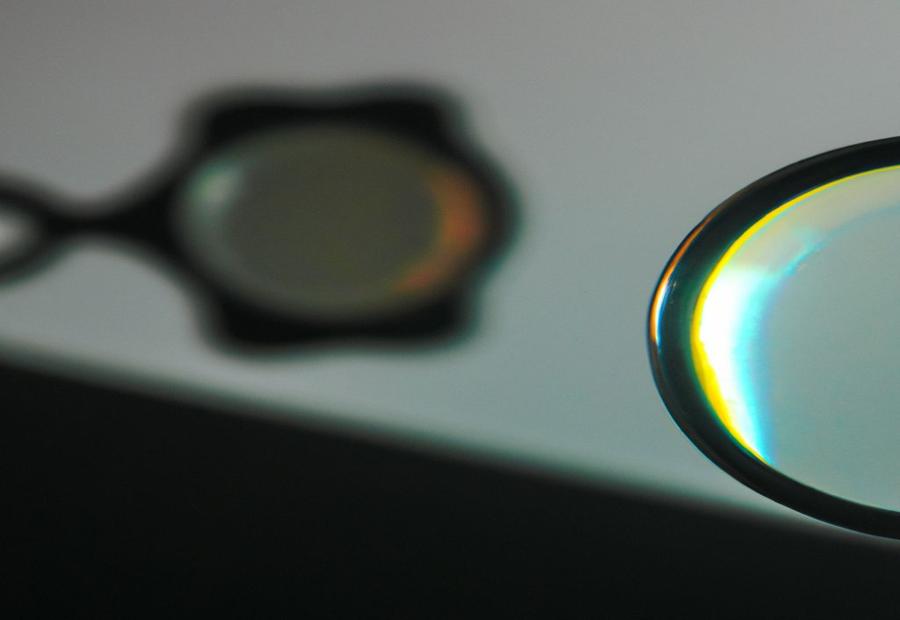
Photo Credits: Paintballbuzz.Com by Jacob Hernandez
When it comes to identifying scope parallax, there are certain factors and methods that can help tremendously. We’ll explore the various factors that can affect scope parallax, and how they impact accuracy.
Additionally, we’ll uncover the methods used to detect scope parallax, providing you with the necessary tools to spot this phenomenon effectively.
Whether you’re a seasoned shooter or an aspiring marksman, understanding how to identify scope parallax is key to achieving precise and consistent results.
Factors Affecting Scope Parallax
Factors affecting scope parallax can vary based on different elements in optical devices. These factors include:
| Magnification | Higher magnification levels can enhance the visibility of parallax. |
| Object Distance | Objects that are closer to the scope can have a greater impact on parallax. |
| Eye Position | The position of the shooter’s eye in relation to the center of the scope’s exit pupil can affect parallax. A slight change in eye position can cause parallax to occur. |
| Target Distance | The distance to the target can influence the amount of parallax. Closer targets are more likely to display noticeable parallax. |
| Scope Quality | The quality of the scope’s construction and design can impact the presence of parallax. Higher-quality scopes often have features to mitigate parallax. |
Methods to Detect Scope Parallax
1. Employ the use of a parallax adjustment knob or dial on your scope. Many scopes are equipped with a built-in adjustment feature specifically intended to correct for parallax. By utilizing this knob, you can fine-tune the scope’s internal lens system to effectively eliminate parallax at various distances.
2. Conduct the “parallax test“ by selecting a target at a known distance. While maintaining your eye behind the scope, slightly move your head up, down, left, and right. If the crosshairs appear to shift in relation to the target, it indicates the presence of parallax. Conversely, if there is no movement, it suggests the absence of parallax.
3. Take advantage of a parallax detection device. These devices are specifically designed to measure the extent of parallax in a scope. Typically, they consist of a grid or reticle placed at a fixed distance, allowing for observation of any crosshair movement. By comparing the movement of the crosshairs to the grid, you can accurately determine the degree of parallax.
4. Verify parallax at different distances. To gain a comprehensive understanding of your scope’s parallax characteristics, evaluate it at various distances. This will enable you to identify any specific range or distances where parallax may occur.
5. Refer to the manufacturer’s instructions or user manual for guidance. Some scopes may include specific instructions or recommendations for detecting and correcting parallax. These instructions can provide valuable insights or techniques for accurately detecting parallax.
Note: Ensuring accurate aiming and shooting requires the detection of scope parallax. By implementing these methods, you can effectively identify and measure the presence of parallax in your scope, resulting in more precise aiming and improved shooting performance.
How to Correct Scope Parallax?
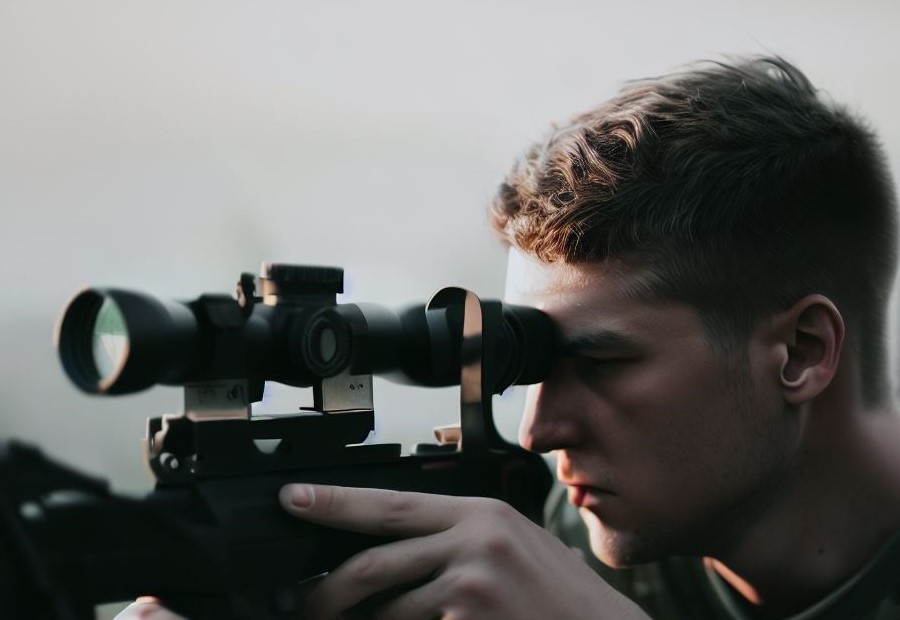
Correcting scope parallax is crucial for achieving accurate and precise aiming.
In this section, we’ll uncover effective techniques to address scope parallax.
From adjusting the parallax knob to utilizing parallax correction devices, we’ll explore practical solutions that ensure your shots hit the mark.
So, if you’re looking to enhance your shooting performance and eliminate any parallax-induced errors, read on for valuable insights and expert tips in rectifying scope parallax.
Adjusting the Parallax Knob
To accurately adjust the parallax knob on your scope, simply follow these steps:
- Identify the parallax knob on your scope, which is typically situated on the turret or side of the scope.
- Ensure that your rifle is securely positioned and aimed at a distant target.
- Take a look through the scope and concentrate on the reticle (crosshair).
- While you are looking through the scope, slowly rotate the parallax knob in either direction.
- Notice how the target image responds as you make adjustments to the knob. The objective is to minimize reticle movement in relation to the target when you alter your eye position.
- Continue to make minor adjustments to the parallax knob until the reticle remains immobile as you shift your eye position back and forth.
- If the parallax knob has numerical markings, take note of the specified distance that corresponds to the target distance you are shooting at. This information will aid you in quickly adjusting the parallax in the future.
- Once you have achieved the optimal parallax adjustment, tighten the knob to secure the setting.
- Remember to regularly inspect and adjust the parallax knob whenever you alter shooting distances.
By adhering to these steps, you will be able to effectively adjust the parallax knob on your scope, resulting in enhanced clarity and accuracy of your shots.
Using Parallax Correction Devices
- One way to correct scope parallax is by using parallax correction devices. This knob is usually located on the side of the scope and allows you to fine-tune the focus and eliminate parallax.
- Understanding the Correct Distance: To effectively use parallax correction devices, it is important to understand the correct distance at which the parallax should be corrected. This distance is usually indicated on the device or in the scope’s user manual.
- Aligning the Reticle: When using parallax correction devices, it is crucial to align the reticle properly. Make sure the reticle is centered and aligned with the target before adjusting the parallax.
- Testing and Adjustment: Once the parallax correction device is set, it is essential to test and make any necessary adjustments. Engage in target practice to ensure that the parallax is completely eliminated.
By utilizing parallax correction devices, you can ensure accurate aiming and improve your overall shooting precision.
Common Misconceptions about Scope Parallax

Photo Credits: Paintballbuzz.Com by Jesse Gonzalez
Let’s debunk some myths surrounding scope parallax! Contrary to popular belief, scope parallax isn’t just limited to long-range shooting. We’ll dive into the misconception that scope parallax only affects distant targets.
Join us as we explore the truth behind these assumptions and separate fact from fiction in the world of scope parallax. Get ready to see things through a clearer lens!
Scope Parallax Only Affects Long-Range Shooting
Scope parallax is often misunderstood, with a common myth being that it only affects long-range shooting.
However, this is not entirely accurate. Scope parallax can impact the accuracy of your aim at any distance, not just long-range.
It occurs when the reticle and the target appear to be on different planes, causing the point of aim to shift. This can result in missed shots or a lack of precision.
To understand this myth, it’s important to recognize that scope parallax is dependent on the target’s distance, not the shooter’s position. Even at shorter distances, if the scope has parallax and it’s not corrected, it can still affect the accuracy of your shots.
To ensure precise aiming, it’s essential to correct scope parallax using the parallax adjustment mechanism on your scope. This allows you to align the reticle and the target, regardless of the shooting distance.
By making this adjustment, you can eliminate the potential for parallax error and improve your shooting accuracy.
Fact: Scope parallax can impact the accuracy of your shots at any distance, making it crucial to understand how to correct and account for this optical phenomenon.
Myth: All Scopes Have Parallax Adjustment
Not all scopes have parallax adjustment.
At-a time when varied scopes are available in the market, it is essential to understand that not all scopes come with parallax adjustment capabilities. Some scopes, especially lower-end models, lack this feature.
The ability to adjust for parallax is found in higher-end, specialized, and precision scopes. So, it is crucial to carefully consider the specifications of a scope before assuming it has a parallax adjustment.
Don’t fall for the misconception that all scopes have this capability.
Tips for Using Scopes with Parallax
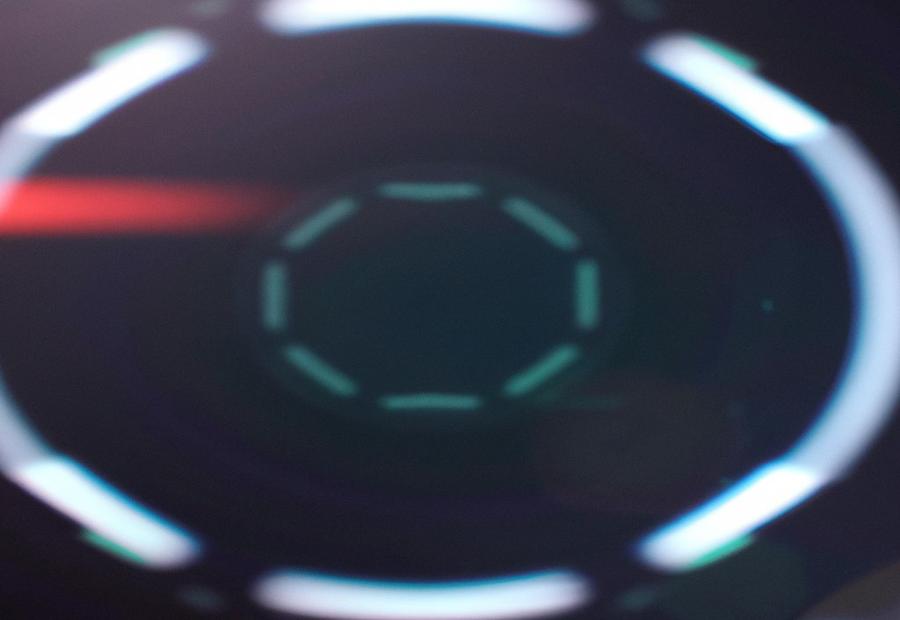
Photo Credits: Paintballbuzz.Com by Gabriel Brown
If you’re a fan of scopes with parallax adjustment, then you’re in for a treat!
In this section, we’ll share some fantastic tips on how to get the most out of your scope.
From setting it up perfectly to mastering the art of focusing and diopter adjustment, we’ve got you covered.
Plus, we’ll reveal all the secrets to maintaining proper eye relief for a comfortable and precise shooting experience.
Get ready to elevate your shooting game to a whole new level!
Setting up your Scope
When setting up your scope, it is important to follow these steps:
- Mount the scope: Begin by securely mounting the scope onto your firearm. Ensure it is aligned properly and tight enough to prevent any movement during use.
- Level the reticle: Use a scope leveling tool to ensure the reticle is perfectly level with the firearm. This will help with accurate aim.
- Bore Sight: Align the scope with the firearm’s barrel through the process of bore sighting. This can be done using a bore sighting device or by using a target at a short distance.
- Adjust eye relief: Achieve a comfortable and consistent eye relief by adjusting the scope position on the mount.
- Zero the scope: Head to a shooting range with your firearm and adjust the windage and elevation knobs to zero the scope. Align the reticle with the point of impact on the target at a specific distance.
Once you have set up your scope, here are some additional suggestions to consider:
- Practice regularly to become familiar with your scope and firearm combination.
- Keep your scope clean and protected from dust and debris.
- Consider using a scope cover or cap to protect the lenses when the scope is not in use.
- Always check your scope’s zero before heading out for a hunt or shooting session.
- Understand the parallax adjustment on your scope and make any necessary adjustments based on the shooting conditions.
Focusing and Diopter Adjustment
Focusing and diopter adjustment are crucial aspects when using scopes in optics.
These adjustments ensure that you have a clear view of the target, allowing for accurate aiming and precise shooting.
The eyepiece or diopter ring, located at the rear of the scope, is used to achieve proper focusing.
By turning the ring, you can bring the reticle into sharp focus, tailored to your individual vision.
It is important to note that the diopter adjustment should only be changed if there are changes in your vision.
Understanding your eyesight is essential for diopter adjustment. This adjustment compensates for nearsightedness or farsightedness, ensuring optimal reticle focus.
Additionally, maintaining a consistent eye relief distance between your eye and the scope is important to avoid discomfort or eye strain.
Be sure to consult the manufacturer’s instructions for specific guidelines on eye relief for your particular scope model.
Always follow the manufacturer’s instructions to achieve the best results.
Happy shooting!
Maintaining Proper Eye Relief
Maintaining Proper Eye Relief is crucial when using scopes in optics. Proper eye relief refers to the distance between your eye and the scope’s eyepiece, ensuring a clear and comfortable view. To maintain proper eye relief, follow these tips:
1. Positioning: Position the scope in a way that allows you to comfortably see through it without straining your eye or neck muscles. Adjust the scope’s position on your rifle or tripod to achieve the desired eye relief.
2. Optimal distance: Maintain the recommended distance of around 3-4 inches between your eye and the scope’s eyepiece. This distance may vary depending on the specific scope and your personal preference.
3. Check for eyebox: Ensure that you can see the entire field of view without any blackouts or loss of clarity. Adjust the eye relief until you find the eyebox for a clear and unrestricted view.
4. Shooting position: Consistently maintain a stable shooting position to avoid unexpected movements that may affect your eye relief. This is particularly important when shooting from various positions or angles.
5. Eye protection: Safeguard your eyes during shooting activities by wearing appropriate eye protection, such as shooting glasses. Adjust the eye relief to accommodate the protection without compromising your view.
Pro-tip: Regularly practice maintaining proper eye relief to improve your shooting accuracy and prevent eye strain. Adjusting the eye relief ensures a comfortable and clear sight picture, thereby enhancing your overall shooting experience.
Frequently Asked Questions
What is scope parallax?
Scope parallax is an optical effect that occurs when the image of the target and reticle in a scope are not in the same plane. This creates an apparent displacement or difference in apparent direction of the target when the shooter’s eye moves.
How does a scope’s erector lens affect parallax?
The erector lens, which is a group of lenses in the scope, helps to turn the image the right way. It also allows for elevation and windage adjustments using micrometer spindles. While it plays a role in image formation, it does not directly affect parallax.
What is an optical illusion caused by parallax?
The optical illusion caused by parallax is when the target or reticle appears to move when the shooter’s eye moves. This can lead to target confusion and inaccurate shots if not corrected.
What is depth of focus in relation to parallax?
Depth of focus refers to the range of distances at which objects appear in focus. Adjustable parallax riflescopes have a narrow depth of focus, while fixed parallax riflescopes have a deeper depth of focus.
How does a scope’s focal length affect parallax?
A scope’s focal length does not directly affect parallax. Parallax is primarily corrected through adjustments made by the shooter using the scope’s parallax correction system.
What are some tips for correcting and adjusting scope parallax?
To correct and adjust scope parallax, follow these steps:
1) Ensure the reticle is in focus by adjusting the reticle focus ring on the ocular lens.
2) Use the parallax adjustment dial on the side of the scope to eliminate parallax. Set it based on the yardage indicators as a starting point.
3) Fine-tune the adjustment until the reticle appears sharp against the target without shifting focus.
It is important to consider the shooting range targets, atmospheric conditions, and viewing angle when making these adjustments.

